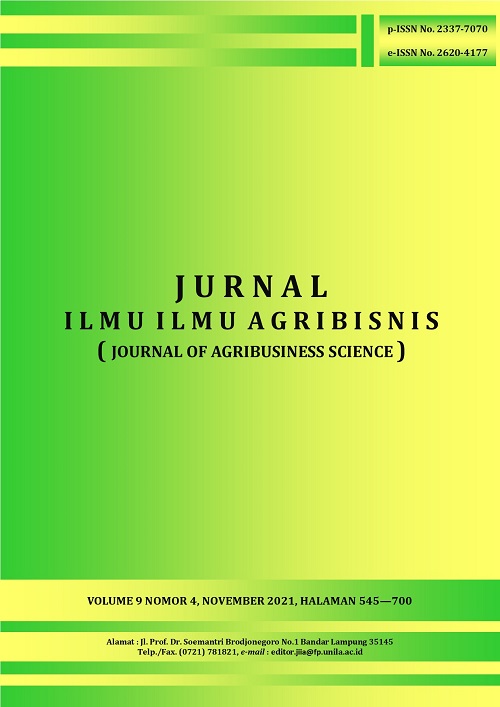NILAI TAMBAH DAN STRATEGI PENGEMBANGAN PRODUK PADA AGRONDUSTRI KOPI BUBUK CAP GUNUNG DI KABUPATEN WAY KANAN
DOI:
https://doi.org/10.23960/jiia.v9i4.5400 Abstract View: 604
Abstract View: 604
Abstract
This study aims to analyze and calculate the added value of Cap Gunung coffee powder agro-industry, and arrange the development strategy of Cap Gunung coffee powder agro-industry products. The method that used in this research is a case study. Therefore, the analytical method that used is the Hayami Method and Strength, Weakness, Opportunity, Threats (SWOT) Analysis. Based on the calculation of the value added is Rp13,386/kg with a value added ratio is 32.81 percent. Furthermore, results of the SWOT analysis show that the values of internal and external factors are 78.8 and 64.9. This value indicate that the Cap Gunung coffee powder agro-industry in quadrant I, or in the Strength-Opportunity (SO) strategy. The priority strategy that can be implemented is to expand the marketing area, increase production output, and develop businesses by utilizing their strengths.
Keywords: added value, development strategy, hayami method, SWOT analysis
Downloads
Downloads
Published
How to Cite
Issue
Section
License
Authors who publish with this journal agree to the following terms:
Authors retain copyright and grant the journal right of first publication with the work simultaneously licensed under a Creative Commons Attribution License that allows others to share the work with an acknowledgement of the work's authorship and initial publication in this journal.
Authors are able to enter into separate, additional contractual arrangements for the non-exclusive distribution of the journal's published version of the work (e.g., post it to an institutional repository or publish it in a book), with an acknowledgement of its initial publication in this journal.
Authors are permitted and encouraged to post their work online (e.g., in institutional repositories or on their website) prior to and during the submission process, as it can lead to productive exchanges, as well as earlier and greater citation of published work (See The Effect of Open Access).














